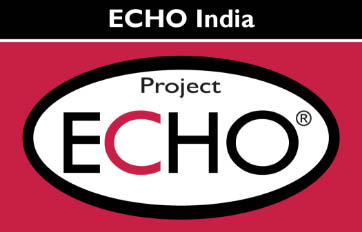In Goa’s quieter talukas, far from the tourist postcards of beaches and palm trees, the word “cancer” is often spoken in hushed tones. For many families, it is not just an illness. It is a shadow that creeps into the home, bringing with it fear, secrecy, and silence. The diagnosis is heavy enough. The stigma that follows can be crushing.
In these communities, people often avoid talking about cancer, even to neighbours they trust. Families hide diagnoses, fearing whispers in the market or judgments from relatives. Patients carry the burden alone, their pain unspoken. In some villages, early symptoms are brushed off as weakness or old age until the disease is too advanced for treatment to work.
It is here, in this charged silence, that three Community Health Officers are quietly dismantling the fear and replacing it with something else knowledge, trust, and the promise of a different ending.
Apoorva Pandharinath Asolkar works out of the sub-centre in Pissurlem, under CHC Valpoi. Before the training, she says, she knew only pieces of the picture. “We were unaware of how to manage cancer patients in the community, especially those in pain. We did not know the measures that could ease their symptoms or improve their quality of life.”
The Cancer Care Bharat Survivorship Training Program, conducted by ECHO India with the Directorate of Health Services, changed that. In a few months, Apoorva went from hesitant to confident. She could now speak fluently about risk factors, prevention, early signs, and treatment. She learned palliative care, patient-centred approaches, and holistic methods of support.
Her new skills were quickly tested. In her catchment area was a breast cancer survivor whose husband resisted acknowledging her illness. “He would mock us when we brought it up. He did not want others to know,” she recalls. Through months of conversations, she gained his trust. Now, the woman comes for regular check-ups. In a community where stigma runs deep, that shift is nothing short of radical.
Jesma Oliveira, from the sub-centre in St. Jose de Areal under PHC Curtorim, remembers her starting point even more starkly. “Before the program, I only knew about breast and cervical cancer. Now I can identify early signs of many others,” she says. She has learned to see the danger in what once seemed minor unexplained fatigue, small lumps, and persistent sores.
The training’s interactive sessions and case discussions helped her connect the dots between medical theory and real-world practice. Now, every patient is a chance for early detection. “I screen everyone I can. I talk about lifestyle changes, tobacco cessation, the importance of prompt treatment. Minor symptoms are often early warnings. We cannot ignore them anymore.”
Shreya Magi, from Sanvordem under CHC Curchorem, describes the transformation in almost personal terms. “Before, our understanding was superficial. Now we know how to address every aspect of a cancer patient’s needs: emotional, physical, rehabilitative, and palliative.”
She has seen her fellow CHOs become more precise, more thorough. Patient histories now include not just symptoms but emotional well-being, family circumstances, and economic constraints. They ask about who cooks in the house, who helps with daily chores, and whether there is money for travel to treatment centres. They understand that care is not just medical, it is social and economic too.
The changes ripple outward. Patients are receiving better follow-up. Families are more informed. Awareness sessions in village halls explain that cancer is not contagious and that early detection can save lives. Still, stigma remains the stubborn obstacle. Shreya calls it the most difficult barrier of all. “People do not want to come forward. We have to keep creating awareness that cancer is just a disease, not a curse.”
For all three women, the program has been as much about personal growth as professional skill. Apoorva now conducts regular NCD camps and integrates cancer screening into daily OPD work. Jesma makes it a point to educate not only patients but their families, knowing they are often the deciding factor in whether treatment is pursued. Shreya has become an advocate for empathy in medical practice, telling younger colleagues that patients must feel heard before they can be healed.
Each has her own vision of success. For Apoorva, it is the woman who now comes for her check-ups without fear. For Jesma, it is the patient who understood that a small symptom was worth acting on. For Shreya, it is seeing her peers take histories that capture the whole person, not just the disease.
Their work may be local, but its meaning is not. In places where cancer once lived in secrecy, there is now the beginning of open conversation. In households where a diagnosis might have meant isolation, there is the possibility of continued life with dignity.
As Apoorva puts it, “Survivorship care is not only about medicines. It is about being there, listening without judgment, and helping patients believe they can still live well.”
In Goa’s cancer care story, these three women are proving that change can start at the primary level, in a sub-centre far from a big hospital, with a simple act: one person choosing to talk about what was once unspeakable.
